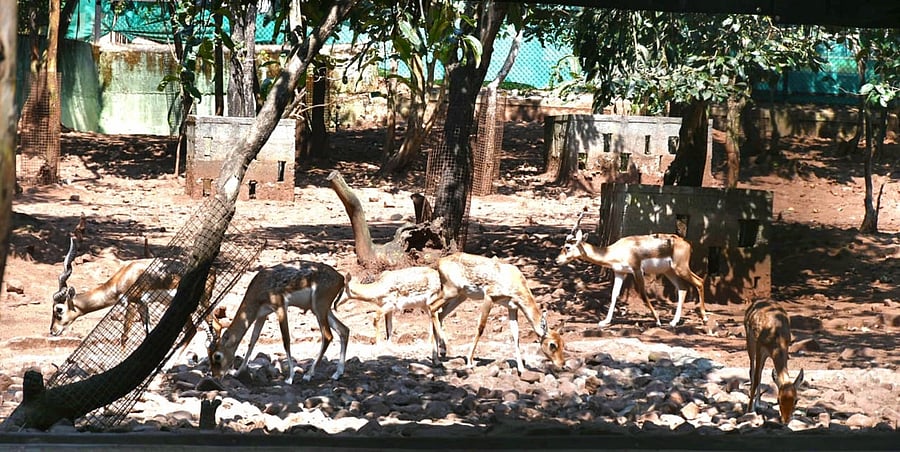
Blackbucks in the enclosure at Kittur Rani Channamma Mini Zoo, located at Bhutaramanhatti village in Belagavi taluk.
Credit: DH photo
Belagavi: Accusations of negligence are being levelled against caretakers and medical staff at the Kittur Rani Channamma Mini Zoo in Bhutaramanhatti after 31 blackbucks, an endangered species protected under Schedule-I of the Wildlife Protection Act, died over a five-day period from November 13 to 17.
While zoo staff and Forest Department officials maintain that the animals died due to a suspected bacterial infection, they say the exact cause will be confirmed only after post-mortem and viscera examination reports are released.
The mini zoo, which has been steadily developing in recent years, has completed several infrastructure works under the Mahatma Gandhi National Rural Employment Guarantee Scheme (MGNREGS). The facility has seen a rise in weekend footfall, especially from families, with visitors coming to see both herbivorous animals such as spotted deer and blackbucks, and carnivorous animals including lions, tigers, leopards, and hyenas. Its location along a national highway has also drawn tourists from neighbouring Maharashtra and Goa.
In an effort to enhance the visitor experience, the Zoo Authority of Karnataka recently shifted 38 blackbucks, all aged up to six years, from the Binadakatti Zoo in Gadag to Belagavi. However, within days of their arrival, the suspected infection claimed the lives of most of them: eight on November 13, 21 on November 15, one on November 16, and another on November 17.
Allegations have since emerged that the zoo’s caretakers and veterinary staff failed to adequately monitor the vulnerable species or respond swiftly to early signs of illness.
Critics argue that trained veterinarians at the zoo lack experience in treating wild animals, and that caretakers did not notice or act upon abnormal behaviour among the blackbucks.
Assistant Conservator of Forests and Zoo Deputy Director Nagesh Balehosur has denied any negligence, insisting that both caretakers and medical staff were attentive.
“We did not get any indications of a bacterial infection. As soon as we noticed symptoms, treatment was provided, but the animals succumbed,” Balehosur said, adding that the viscera test results will ultimately determine the cause of death.
The incident has raised serious concerns about wildlife management protocols and conservation efforts for endangered species housed in smaller zoos across the State.